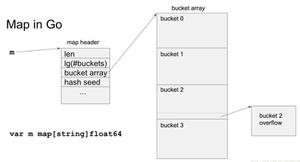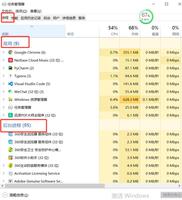Python公用对象的结构

大量的结构体被用于定义Python的对象类型。这一节描述了这些的结构体和它们的使用方法。
所有的 Python 对象都在对象的内存表示的开始部分共享少量的字段。 这些字段用 PyObject 或 PyVarObject 类型来表示,这些类型又由一些宏定义,这些宏也直接或间接地用于所有其他 Python 对象的定义。
PyObject¶All object types are extensions of this type. This is a type which
contains the information Python needs to treat a pointer to an object as an
object. In a normal "release" build, it contains only the object's
reference count and a pointer to the corresponding type object.
Nothing is actually declared to be a
PyObject, but every pointerto a Python object can be cast to a
PyObject*. Access to themembers must be done by using the macros
Py_REFCNTandPy_TYPE.
PyVarObject¶This is an extension of
PyObjectthat adds theob_sizefield. This is only used for objects that have some notion of length.
This type does not often appear in the Python/C API.
Access to the members must be done by using the macros
Py_REFCNT,Py_TYPE, andPy_SIZE.
PyObject_HEAD¶This is a macro used when declaring new types which represent objects
without a varying length. The PyObject_HEAD macro expands to:
PyObjectob_base;
See documentation of
PyObjectabove.
PyObject_VAR_HEAD¶This is a macro used when declaring new types which represent objects
with a length that varies from instance to instance.
The PyObject_VAR_HEAD macro expands to:
PyVarObjectob_base;
See documentation of
PyVarObjectabove.
Py_TYPE(o)¶This macro is used to access the
ob_typemember of a Python object.It expands to:
(((PyObject*)(o))->ob_type)
Py_REFCNT(o)¶This macro is used to access the
ob_refcntmember of a Pythonobject.
It expands to:
(((PyObject*)(o))->ob_refcnt)
Py_SIZE(o)¶This macro is used to access the
ob_sizemember of a Python object.It expands to:
(((PyVarObject*)(o))->ob_size)
PyObject_HEAD_INIT(type)¶This is a macro which expands to initialization values for a new
PyObjecttype. This macro expands to:_PyObject_EXTRA_INIT
1,type,
PyVarObject_HEAD_INIT(type, size)¶This is a macro which expands to initialization values for a new
PyVarObjecttype, including theob_sizefield.This macro expands to:
_PyObject_EXTRA_INIT
1,type,size,
PyCFunction¶Type of the functions used to implement most Python callables in C.
Functions of this type take two
PyObject*parameters and returnone such value. If the return value is
NULL, an exception shall havebeen set. If not
NULL, the return value is interpreted as the returnvalue of the function as exposed in Python. The function must return a new
reference.
PyCFunctionWithKeywords¶Type of the functions used to implement Python callables in C
with signature
METH_VARARGS|METH_KEYWORDS.
_PyCFunctionFast¶Type of the functions used to implement Python callables in C
with signature
METH_FASTCALL.
_PyCFunctionFastWithKeywords¶Type of the functions used to implement Python callables in C
with signature
METH_FASTCALL|METH_KEYWORDS.
PyMethodDef¶Structure used to describe a method of an extension type. This structure has
four fields:
域
C 类型
含义
ml_nameconst char *
name of the method
ml_methPyCFunction
pointer to the C
implementation
ml_flags整型
flag bits indicating how the
call should be constructed
ml_docconst char *
points to the contents of the
docstring
The ml_meth is a C function pointer. The functions may be of different
types, but they always return PyObject*. If the function is not of
the PyCFunction, the compiler will require a cast in the method table.
Even though PyCFunction defines the first parameter as
PyObject*, it is common that the method implementation uses the
specific C type of the self object.
The ml_flags field is a bitfield which can include the following flags.
The individual flags indicate either a calling convention or a binding
convention.
There are four basic calling conventions for positional arguments
and two of them can be combined with METH_KEYWORDS to support
also keyword arguments. So there are a total of 6 calling conventions:
METH_VARARGS¶This is the typical calling convention, where the methods have the type
PyCFunction. The function expects twoPyObject*values.The first one is the self object for methods; for module functions, it is
the module object. The second parameter (often called args) is a tuple
object representing all arguments. This parameter is typically processed
using
PyArg_ParseTuple()orPyArg_UnpackTuple().
METH_VARARGS | METH_KEYWORDSMethods with these flags must be of type
PyCFunctionWithKeywords.The function expects three parameters: self, args, kwargs where
kwargs is a dictionary of all the keyword arguments or possibly
NULLif there are no keyword arguments. The parameters are typically processed
using
PyArg_ParseTupleAndKeywords().
METH_FASTCALL¶Fast calling convention supporting only positional arguments.
The methods have the type
_PyCFunctionFast.The first parameter is self, the second parameter is a C array
of
PyObject*values indicating the arguments and the thirdparameter is the number of arguments (the length of the array).
This is not part of the limited API.
3.7 新版功能.
METH_FASTCALL | METH_KEYWORDSExtension of
METH_FASTCALLsupporting also keyword arguments,with methods of type
_PyCFunctionFastWithKeywords.Keyword arguments are passed the same way as in the vectorcall protocol:
there is an additional fourth
PyObject*parameterwhich is a tuple representing the names of the keyword arguments
or possibly
NULLif there are no keywords. The values of the keywordarguments are stored in the args array, after the positional arguments.
This is not part of the limited API.
3.7 新版功能.
METH_NOARGS¶Methods without parameters don't need to check whether arguments are given if
they are listed with the
METH_NOARGSflag. They need to be of typePyCFunction. The first parameter is typically named self and willhold a reference to the module or object instance. In all cases the second
parameter will be
NULL.
METH_O¶Methods with a single object argument can be listed with the
METH_Oflag, instead of invoking
PyArg_ParseTuple()with a"O"argument.They have the type
PyCFunction, with the self parameter, and aPyObject*parameter representing the single argument.
These two constants are not used to indicate the calling convention but the
binding when use with methods of classes. These may not be used for functions
defined for modules. At most one of these flags may be set for any given
method.
METH_CLASS¶The method will be passed the type object as the first parameter rather
than an instance of the type. This is used to create class methods,
similar to what is created when using the
classmethod()built-infunction.
METH_STATIC¶The method will be passed
NULLas the first parameter rather than aninstance of the type. This is used to create static methods, similar to
what is created when using the
staticmethod()built-in function.
One other constant controls whether a method is loaded in place of another
definition with the same method name.
METH_COEXIST¶The method will be loaded in place of existing definitions. Without
METH_COEXIST, the default is to skip repeated definitions. Since slot
wrappers are loaded before the method table, the existence of a
sq_contains slot, for example, would generate a wrapped method named
__contains__()and preclude the loading of a correspondingPyCFunction with the same name. With the flag defined, the PyCFunction
will be loaded in place of the wrapper object and will co-exist with the
slot. This is helpful because calls to PyCFunctions are optimized more
than wrapper object calls.
PyMemberDef¶Structure which describes an attribute of a type which corresponds to a C
struct member. Its fields are:
域
C 类型
含义
nameconst char *
name of the member
type整型
the type of the member in the
C struct
offsetPy_ssize_t
the offset in bytes that the
member is located on the
type's object struct
flags整型
flag bits indicating if the
field should be read-only or
writable
docconst char *
points to the contents of the
docstring
typecan be one of manyT_macros corresponding to various Ctypes. When the member is accessed in Python, it will be converted to the
equivalent Python type.
Macro name
C 类型
T_SHORT
short
T_INT
整型
T_LONG
长整型
T_FLOAT
浮点数
T_DOUBLE
double
T_STRING
const char *
T_OBJECT
PyObject *
T_OBJECT_EX
PyObject *
T_CHAR
字符
T_BYTE
字符
T_UBYTE
unsigned char
T_UINT
无符号整型
T_USHORT
unsigned short
T_ULONG
无符号长整型
T_BOOL
字符
T_LONGLONG
long long
T_ULONGLONG
无符号 long long
T_PYSSIZET
Py_ssize_t
T_OBJECTandT_OBJECT_EXdiffer in thatT_OBJECTreturnsNoneif the member isNULLandT_OBJECT_EXraises anAttributeError. Try to useT_OBJECT_EXoverT_OBJECTbecauseT_OBJECT_EXhandles use of the
delstatement on that attribute more correctlythan
T_OBJECT.flagscan be0for write and read access orREADONLYforread-only access. Using
T_STRINGfortypeimpliesREADONLY.T_STRINGdata is interpreted as UTF-8.Only
T_OBJECTandT_OBJECT_EXmembers can be deleted. (They are set to
NULL).
PyGetSetDef¶Structure to define property-like access for a type. See also description of
the
PyTypeObject.tp_getsetslot.域
C 类型
含义
名称
const char *
attribute name
get
getter
C Function to get the attribute
set
setter
optional C function to set or
delete the attribute, if omitted
the attribute is readonly
doc
const char *
optional docstring
closure
void *
optional function pointer,
providing additional data for
getter and setter
The
getfunction takes onePyObject*parameter (theinstance) and a function pointer (the associated
closure):typedefPyObject*(*getter)(PyObject*,void*);
It should return a new reference on success or
NULLwith a set exceptionon failure.
setfunctions take twoPyObject*parameters (the instance andthe value to be set) and a function pointer (the associated
closure):typedefint(*setter)(PyObject*,PyObject*,void*);
In case the attribute should be deleted the second parameter is
NULL.Should return
0on success or-1with a set exception on failure.







